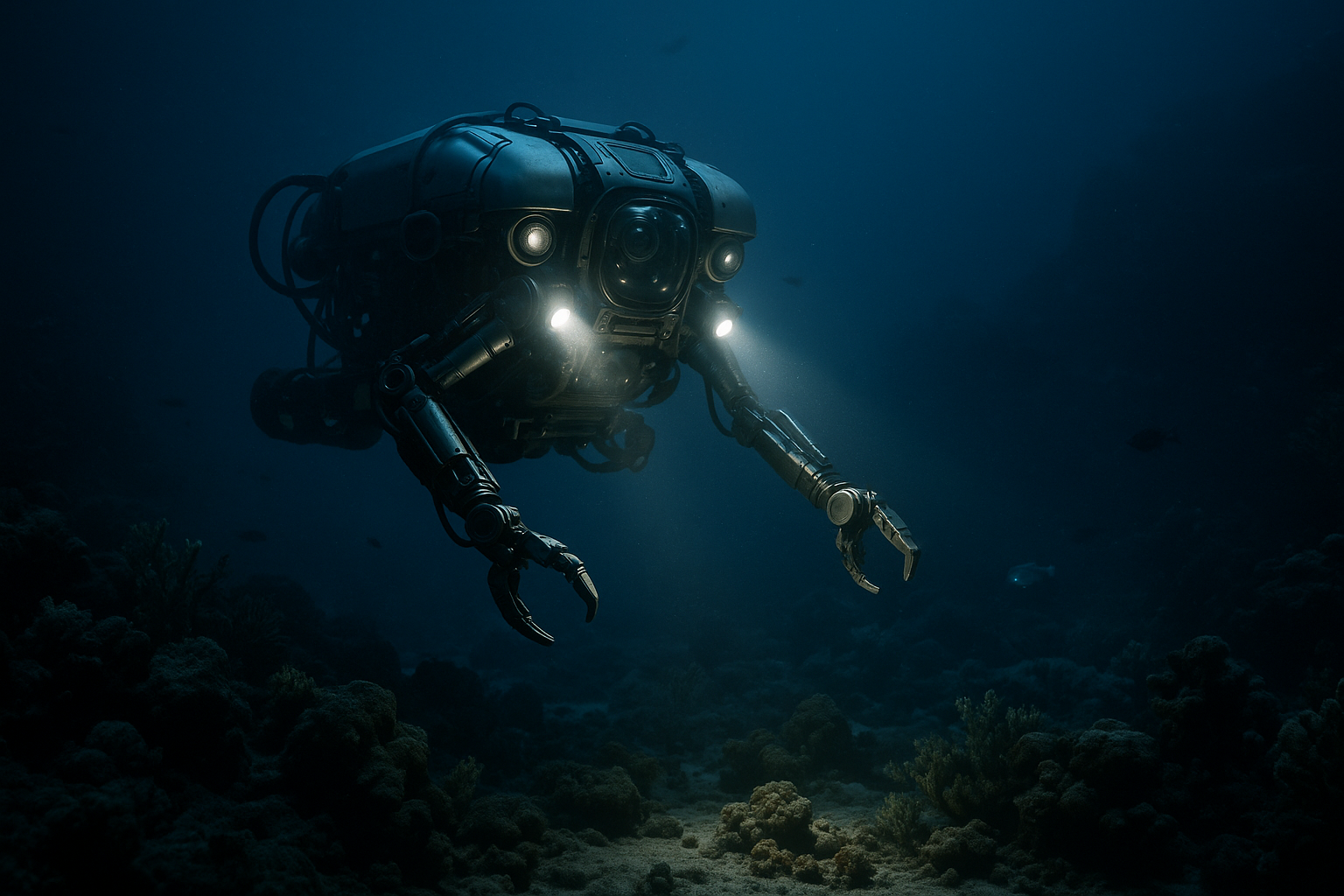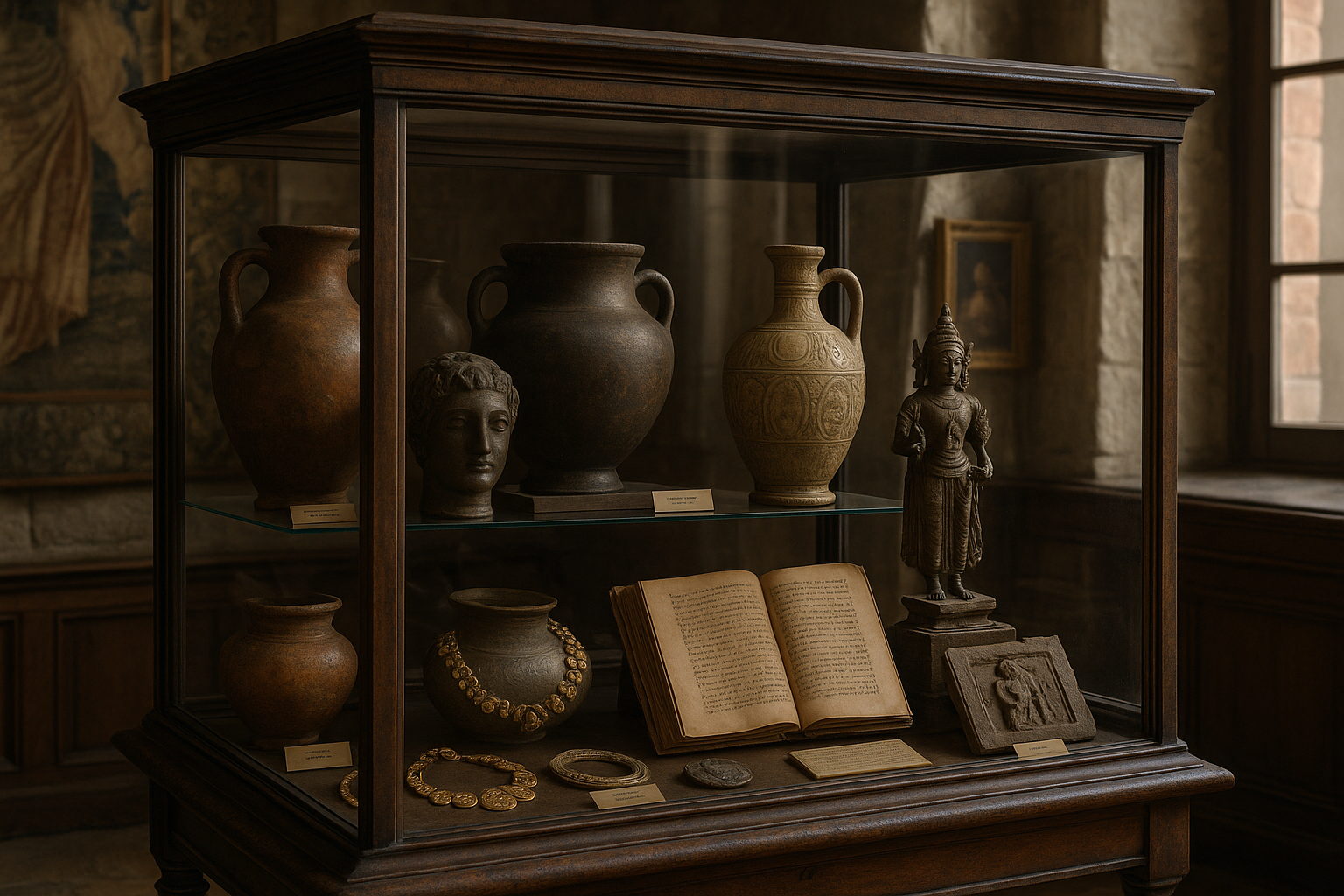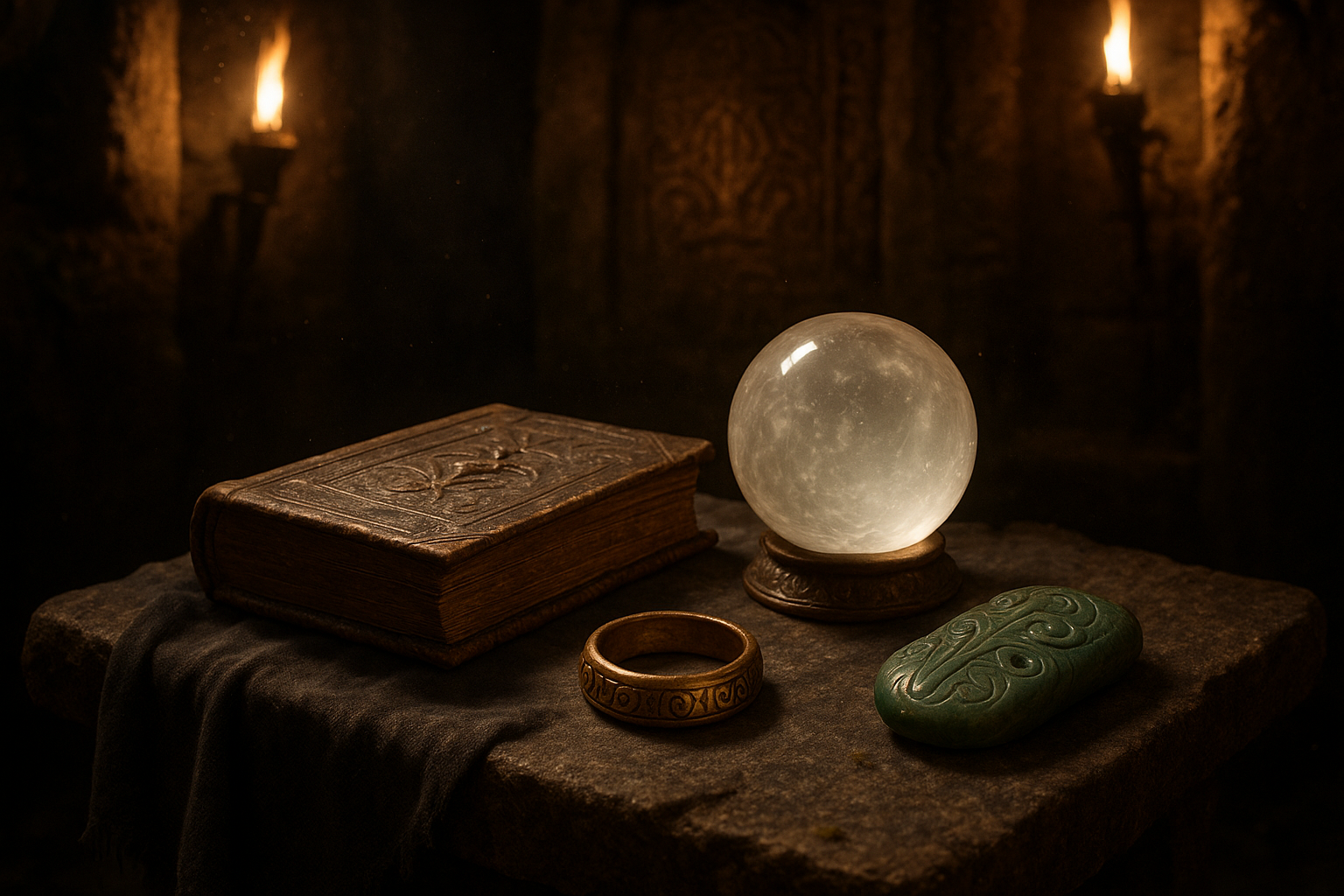The allure of hidden treasures, buried deep beneath the ocean’s surface, has fascinated adventurers, historians, and dreamers for centuries. From tales whispered among sailors to the vivid depictions in literature and film, pirate ships and their fabled riches continue to captivate our imagination. But what if these tales of gold and glory were more than just legends? What if, lying beneath the rolling waves and silvery foam, are real remnants of a time when piracy ruled the seas? Welcome to the enthralling world of underwater archaeology, where modern technology meets the age-old quest for treasure. In this article, we will embark on a journey to uncover the lost treasures of pirate ships discovered deep beneath the sea. 🏴☠️
As we dive into this fascinating subject, we will explore how technological advancements have revolutionized the field of underwater archaeology. Gone are the days when treasure hunting was merely a game of chance, left to the whim of fortune and fate. Today, cutting-edge technology, from sonar mapping to remote-operated vehicles, allows us to peer into the ocean’s depths with unprecedented clarity. These tools not only guide us to sites of potential interest but also enable us to document and preserve the fragile remnants of history resting on the seabed. In this article, we will delve into the techniques and tools that have made these discoveries possible, highlighting key expeditions that have brought sunken pirate ships back to life.
But the story of pirate ships is not just about treasure. It’s about the people who lived, fought, and sometimes died on these vessels. We’ll explore the lives of infamous pirates such as Blackbeard, Captain Kidd, and Anne Bonny, whose daring exploits have become the stuff of legend. Through the artifacts and shipwrecks unearthed, we gain insight into the harsh realities and relentless spirit that defined the Golden Age of Piracy. What drove these individuals to take up the pirate’s life? What were the risks and rewards? As we unearth these sunken vessels, we also unearth stories of ambition, betrayal, and survival that paint a complex picture of piracy beyond the stereotypes.
Finally, we will consider the ethical implications of these discoveries. The excitement of finding treasure is undeniable, but it also raises important questions about ownership, preservation, and cultural significance. Who truly owns these treasures of the deep? How do we ensure that they are preserved for future generations to appreciate and learn from? We will discuss the challenges faced by archaeologists and historians in balancing the thrill of discovery with the responsibility of stewardship. Through these discussions, we aim to not only celebrate the excitement of finding lost pirate ships but also reflect on the broader implications for our understanding of history and heritage. So, join us as we set sail on an adventure through time and tides, uncovering the mysteries of pirate ships lost to the ocean’s embrace. ⚓️
The Mysterious World of Sunken Pirate Ships
The allure of pirate ships has captivated imaginations for centuries, often shrouded in tales of treacherous voyages, buried treasures, and legendary figures like Blackbeard and Captain Kidd. These seafaring rogues ruled the high seas during the Golden Age of Piracy, spanning the late 17th and early 18th centuries. But what remains of their infamous vessels today? Recent underwater archaeological discoveries have unearthed some of these legendary ships, lying deep beneath the ocean’s surface. Join us as we dive into this mysterious world, exploring the intriguing stories and historical significance behind these sunken pirate ships.
One might wonder what happens to a ship that sinks to the ocean floor. Over time, it becomes a time capsule, preserving artifacts and clues about the past. The ocean’s depths can be both a preserver and a destroyer, as shipwrecks are subject to the forces of corrosion and marine life. However, in certain conditions, these ships remain remarkably intact, providing invaluable insights into the life and times of the pirates who once roamed the seas.
Today, advancements in technology, such as remote-operated vehicles (ROVs) and sonar mapping, have revolutionized underwater exploration. These tools allow archaeologists to locate and study shipwrecks with unprecedented precision. Discoveries of pirate ships like the Whydah Gally and Queen Anne’s Revenge offer a glimpse into the past, revealing details about pirate tactics, daily life, and even the origins of their notorious reputations.
Famous Pirate Shipwreck Discoveries
The Whydah Gally
One of the most famous pirate shipwreck discoveries is the Whydah Gally, a vessel captained by the notorious pirate Samuel “Black Sam” Bellamy. The Whydah was originally a slave ship before Bellamy captured it in 1717, transforming it into his flagship. Tragically, the ship met its demise during a violent storm off the coast of Cape Cod, Massachusetts, the same year. In 1984, explorer Barry Clifford discovered the wreck, marking the first authenticated pirate shipwreck ever found. The Whydah’s discovery yielded a treasure trove of artifacts, including coins, cannons, and personal belongings, shedding light on the daily lives of pirates.
The artifacts recovered from the Whydah Gally offer a rare glimpse into the pirate era. Coins from various countries highlight the global nature of piracy, while weapons and tools provide insights into the pirates’ strategies and survival tactics. This discovery continues to fascinate historians and enthusiasts alike, with exhibits touring museums around the world.
To see the Whydah Gally in greater detail, check out this engaging YouTube video: “The Real Pirates of the Caribbean” by National Geographic.
Queen Anne’s Revenge
Another iconic pirate ship is the Queen Anne’s Revenge, commanded by the infamous Edward Teach, better known as Blackbeard. This ship was originally a French slave vessel before Blackbeard captured and renamed it in 1717. The Queen Anne’s Revenge met its fate in 1718, running aground near Beaufort Inlet, North Carolina. The ship’s discovery in 1996 sparked significant interest, as archaeologists recovered thousands of artifacts, including cannons, anchors, and personal items, which offered insights into Blackbeard’s life and the operation of his crew.
| Ship | Captain | Year Discovered | Significant Findings |
|---|---|---|---|
| Whydah Gally | Samuel “Black Sam” Bellamy | 1984 | Coins, cannons, personal belongings |
| Queen Anne’s Revenge | Edward “Blackbeard” Teach | 1996 | Cannons, anchors, personal items |
The discoveries of these ships have been pivotal in understanding the pirate era. They offer not just physical artifacts but also enrich the narrative of piracy, allowing historians to piece together the everyday life of these notorious figures. For those intrigued by Blackbeard’s story, a visit to the exhibits showcasing these finds is highly recommended.
The Technology Behind Discovering Sunken Ships
Uncovering shipwrecks, especially those dating back to the pirate era, requires advanced technology and skilled teams of archaeologists and researchers. Modern techniques have vastly improved our ability to locate and study these underwater sites. Some of the key technologies involved in these discoveries include sonar mapping, remote-operated vehicles (ROVs), and underwater photography.
Sonar mapping is often the first step in locating a shipwreck. It involves using sound waves to create detailed images of the ocean floor, allowing researchers to identify potential sites for exploration. This technology can cover vast areas, making it a crucial tool in the search for sunken ships. Once a site is identified, ROVs are deployed to capture detailed images and videos of the wreckage, providing valuable data without disturbing the site.
Underwater photography further complements these efforts, capturing high-resolution images that allow archaeologists to examine intricate details. These images are often used to create 3D models of the wreckage, offering a comprehensive view of the ship and its surroundings. This technology not only aids in documentation but also helps in planning excavations and ensuring the preservation of fragile artifacts.
Remote-Operated Vehicles (ROVs)
ROVs are unmanned submersibles equipped with cameras and tools for collecting data and samples. These vehicles are essential for exploring deep-sea environments that are otherwise inaccessible to divers. ROVs can operate at great depths, providing real-time footage and allowing researchers to make informed decisions about the excavation process.
- Sonar Mapping: Utilizes sound waves to detect underwater objects and structures.
- Remote-Operated Vehicles (ROVs): Submersibles equipped with cameras and tools for exploration.
- Underwater Photography: Captures high-resolution images for documentation and analysis.
These technologies, combined with the expertise of archaeologists, have significantly advanced our understanding of pirate shipwrecks. They enable the careful recovery and preservation of artifacts, ensuring that the stories of these legendary vessels continue to be told for generations to come. As technology continues to evolve, the possibilities for future discoveries are limitless, promising new insights into the fascinating world of piracy.

Conclusion
As we conclude our exploration of lost pirate ships and the deep-sea discoveries that bring them back to light, it’s clear that beneath the ocean’s surface lies a treasure trove of history, mystery, and human ambition. Each wreck uncovered tells a story of adventure, rebellion, and the perilous pursuit of fortune that defined the golden age of piracy.
The true wonder of these discoveries lies in their ability to connect myth with reality. 🌊💡 Through modern technologies like sonar mapping, submersibles, and underwater robotics, archaeologists are piecing together long-forgotten tales of maritime daring and survival. Ultimately, finding lost pirate ships is more than recovering artifacts — it’s about reviving the spirit of exploration and uncovering the deep, untold chapters of our shared oceanic past.
Gabriel is a visual storyteller and archival artist whose lens dives deep into the submerged echoes of underwater archaeology. Through sediment and salt, Gabriel traces forgotten histories — those whispered by shipwrecks, eroded artifacts, and drowned cities.
Compelled by the allure of ancient trade routes, submerged sanctuaries, and the ocean’s quiet possession of the past, Gabriel’s work charts a poetic cartography of the sea’s memory. From coral-laced amphorae to oxidized anchors, every object he illuminates becomes part of a narrative where time collapses and the past drifts close.
His creations are more than documentation — they are visual meditations on absence and endurance. Gabriel blends design, historical research, and storytelling to surface the quiet resilience of maritime remnants. He captures the textures of time: rust that blooms like algae, stone that crumbles into myth, and silence that speaks louder than ruin.
Through curated imagery, thoughtful essays, and reconstructed impressions of what lies beneath, Gabriel invites viewers to see underwater ruins not as remnants, but as thresholds to wonder — places where memory is refracted through water, and where myth lingers like salt on stone.
His practice is a tribute to:
The unknowable depths of civilizations consumed by tides
The fragile endurance of objects left behind
The enduring dialogue between water, stone, and remembrance
If your soul drifts toward the relics of lost maritime empires, the mythic pull of coastal rituals, or the ghostly grace of sunken vessels, Gabriel welcomes you to descend into a space where history sleeps in sediment — but dreams in currents.




